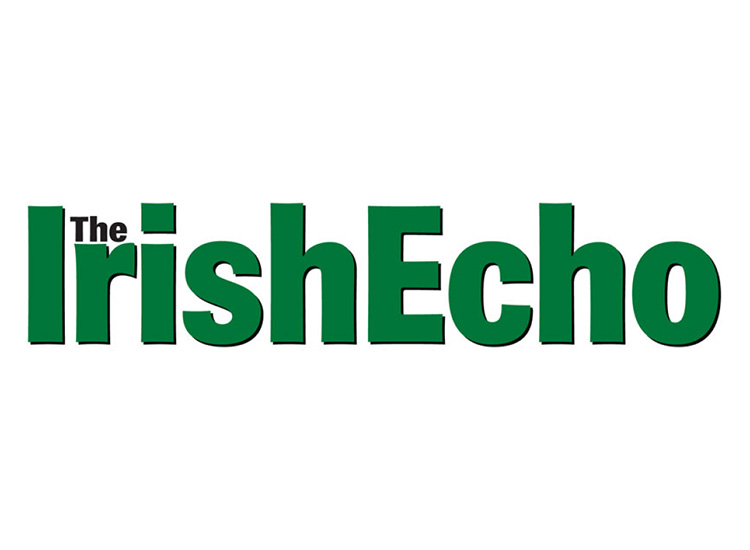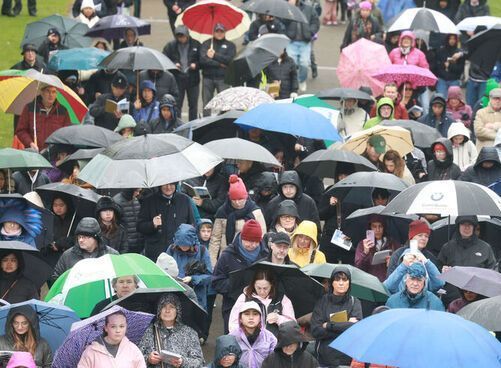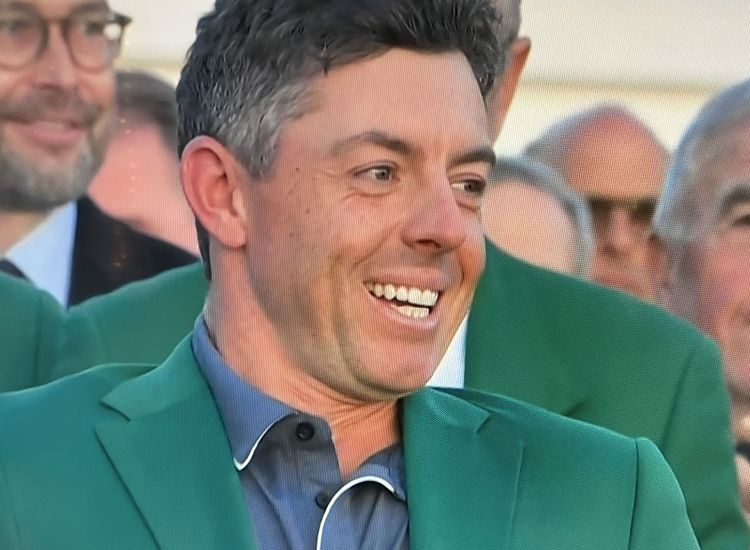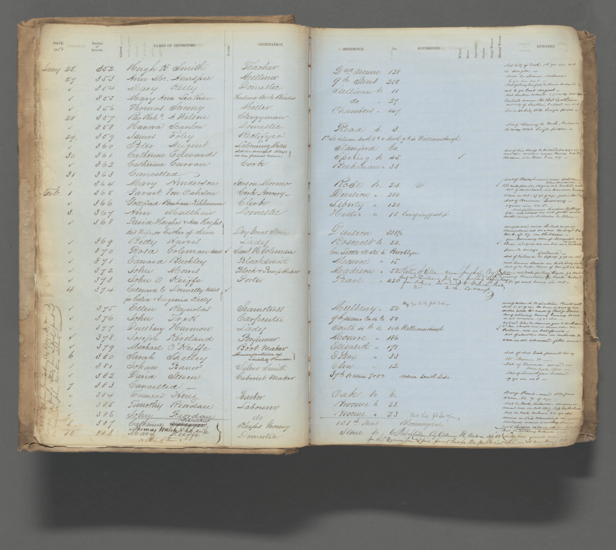[caption id="attachment_67816" align="aligncenter" width="600" caption="The Donegal you want to pack in a bag and bring home"]
The first time that I ever laid eyes on Donegal it was courtesy of Hollywood. I was a kid growing up in Dublin, well inside The Pale and my world consisted of a few square miles of the city's south side enlivened by occasional forays into next door counties such as Wicklow, Meath and Kildare.
In the summer we would go to Wexford for our holidays and, occasionally, we would really strike out for terra incognita and head for County Monaghan where my granny lived. Monaghan was at the extreme edge of my known world. And as best as I could tell Donegal was beyond even that.
The revelation that was Donegal, Hollywood-style, was presented to my eyes in glorious Technicolor in a movie called "The Fighting Prince of Donegal."
This was Disney Donegal, which was fine enough. It looked like a very exciting place where real life had a whiff of the kind of battles that me and the lads would engage in on the road, or in our back gardens.
I went to see the film at "the pictures." I was ten and I came out of the cinema smitten by Susan Hampshire. I vowed to someday go to Donegal and woo her on bended knee.
I went. And I went again, and again.
But at first not to just admire the scenery, or seek out Susan Hampshire. It was years on and I was a hot-footed reporter for the Irish Press group of newspapers.
The group was an around-the-clock operation with the Irish Press, Evening Press and Sunday Press. I worked mostly for the first two, but occasionally I would be assigned to a mission called "The Sunday Press Run."
The "run" was rather like its title. For three days a reporter and photographer would flee Dublin and the clutches of news editors to dig up stories in far flung corners of the republic. The North was out of bounds because if fell under the purview of the Belfast office.
But this still left a lot of mileage and acreage. Ireland isn't small when you factor in all the ups, downs and bends in the road.
Right from the very start I had this urge to go to the edges of the island, the wilder places, those less trodden, and less reported. Most of the photographers had the same idea. The greater the number of miles between us and the office the better.
And this was before cell phones. For the three days we would be, blessedly, on our own and mostly out of touch. So there were trips to the peninsulas of Kerry and Cork, the far reaches of Clare, Galway, Mayo and Sligo.
And there was Donegal.
Donegal was no farther away than Kerry in terms of miles, but it had a strong sense of being the way farthest from Dublin.
Look at the map and you'll see why. Donegal seems cut off from the rest of the republic by the North. The only county in the republic that it borders is Leitrim, so even if the quickest way to the place was through Tyrone - and that's how we would usually get there - there was a sense of glorious isolation once Donegal had been reached.
The feeling was not unlike making it into Mexico and leaving the posse behind over the Rio Grande.
And so there were stories, strange tales with huge photographs that would take up entire pages in the Sunday paper. My first port of call was literally a port. You think New York never sleeps, well try Killybegs.
In between the stories there was indeed the scenery. I liked, and still do, all things outdoors and Donegal is an outdoor place. A three day Sunday Press assignment would involve a lot of gazing and deep breathing, as if the Atlantic and mountain air would somehow sustain body and soul for an extended period once back in Dublin.
Through all the Sunday Press runs in all the counties I was additionally on a personal mission. We would stay for two nights in a hotel. My dinner order never varied. I always had a mixed grill, an Irish epicurean treasure.
Yer man Pete McCarthy, God rest him, wrote about all the bars he visited in a splendid book called McCarthy's Bar. Well, I could write a book about mixed grills. It would contain the astounding revelation that the best I ever had in all of Ireland was in Donegal Town, The Central Hotel to be precise.
By best I mean that I couldn't finish it. I was overwhelmed by its sheer abundance. And this was years before the Celtic Tiger which, I am now certain, was never needed, not if there were mixed grills for an affordable price in a Donegal hotel.
There were other reporting trips to the county that were linked to weekday stories and not the Sunday paper. I was in Bundoran for that still talked about NYPD Emeralds march in commemoration of the hunger strikers.
That was 1984, Orwell's big year, but big brother had nothing on the operator who placed my call through to Dublin from a public phone box after the kilted cops had done their thing. She was listening into the entire report and wasn't shy about letting me know her feelings about it.
And then there was that European election and the vote count, again in Bundoran. It was held in a place called the Atlantic Ballroom and went deep into the night.
As the count and recount went on and on, I ended up having a long discussion about the state of Irish political life with a man who had turned up to observe proceedings at Europe's westernmost edge. His name was Michael D. Higgins.
In later years there would be more visits to Donegal, this time against the backdrop of my new American family life. So now I was a tourist and this would mean an entirely different take on the county.
But a momentary digression. It was in reporting something that I had a conversation with a leading unionist politician who said that he would gladly trade South Armagh for, and I figured he was about to say Donegal, but he didn't.
I didn't take umbrage, even though the O'Hanlon clan is an Armagh one and the rolling hills of South Armagh are easily worth the postcard treatment. I knew what he was actually referring too and that was the British army designation of "bandit country."
But back to the unionist politician. He was offering to trade South Armagh for just Letterkenny.
I suggested that he might give Dublin a call; perhaps he and his fellow unionists would throw in the north end of Armagh for, say, Ballybofey.
But back to tourism. Donegal sells itself easily on that front. So I have happy memories of tramping hills, walking beaches, treading gingerly along sea cliffs and losing lots of golf balls in high links grasses.
But the most precious Donegal memory of all is instantly recalled to this day by simply looking at a framed photograph.
A few years ago my wife and our two daughters went on an expedition to the Inishowen Peninsula. At least that's what it felt like. Inishowen is like a Donegal within a Donegal, an eye-popping thrust of land that ends at Malin Head, the northernmost point in Ireland.
Visitors here like to pick up stone and rocks at the Atlantic's edge and place them on the ground in the form of names. And that we did for the two girls. The photo was duly taken and framed later back in New York.
I like to think of the names still being there, but of course those rocks and stones have been used many times since to form other names.
But then again. Well, there's only one way to find out for sure. Donegal here we come.









